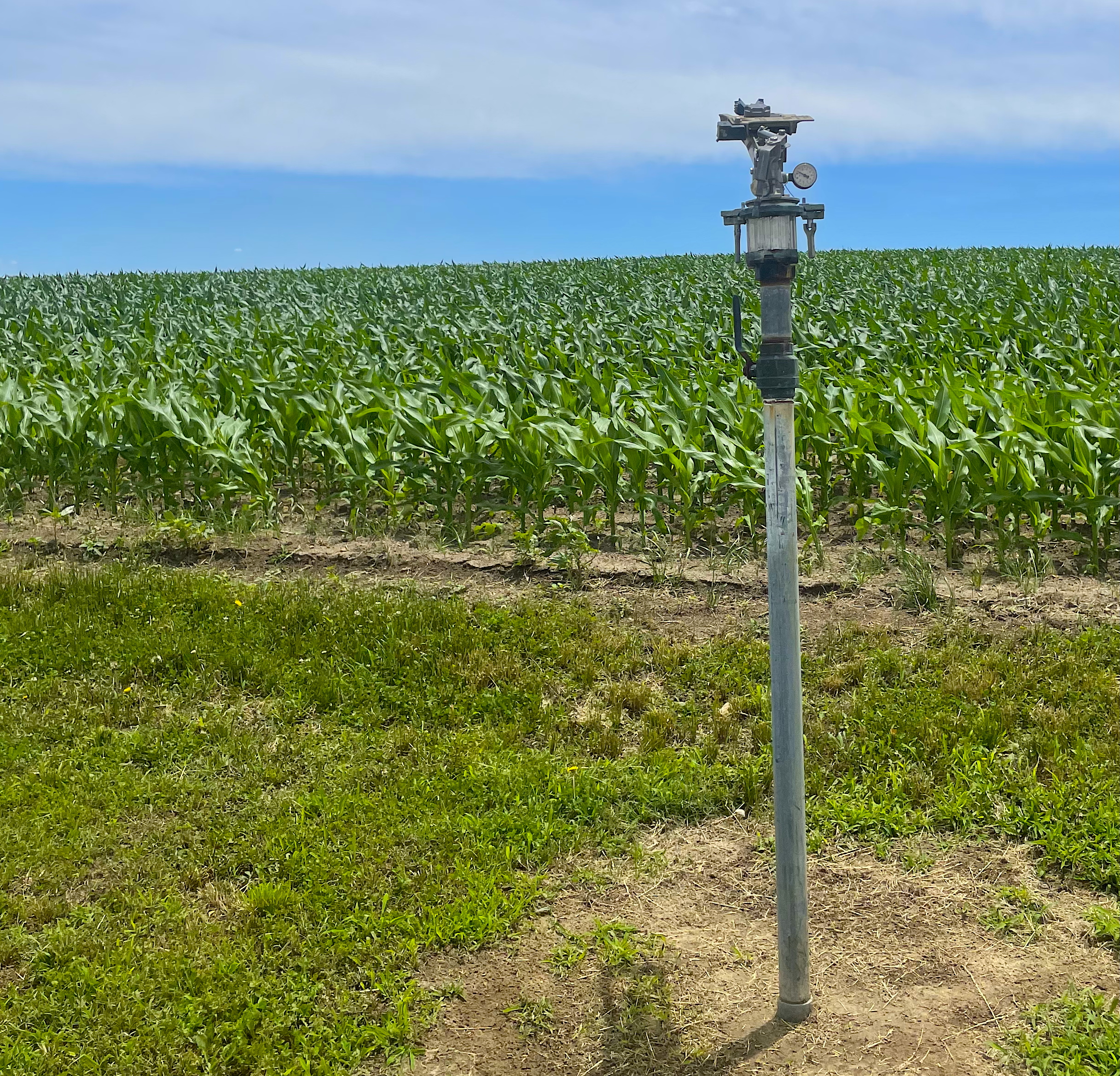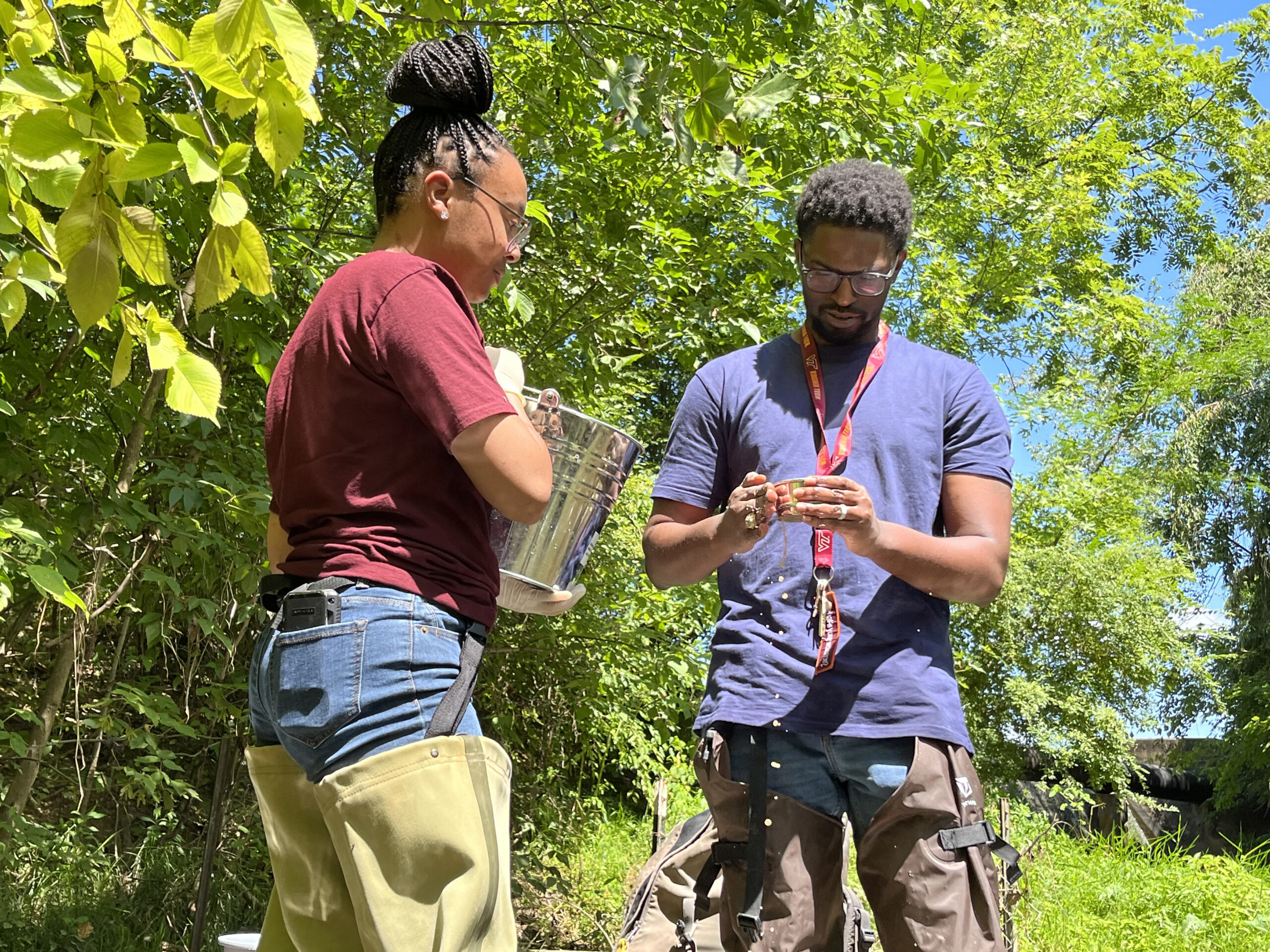Hook, Line & Science
Saving the Red Snapper, Angling Around Windmills, and the Night Life of Oyster Toadfish
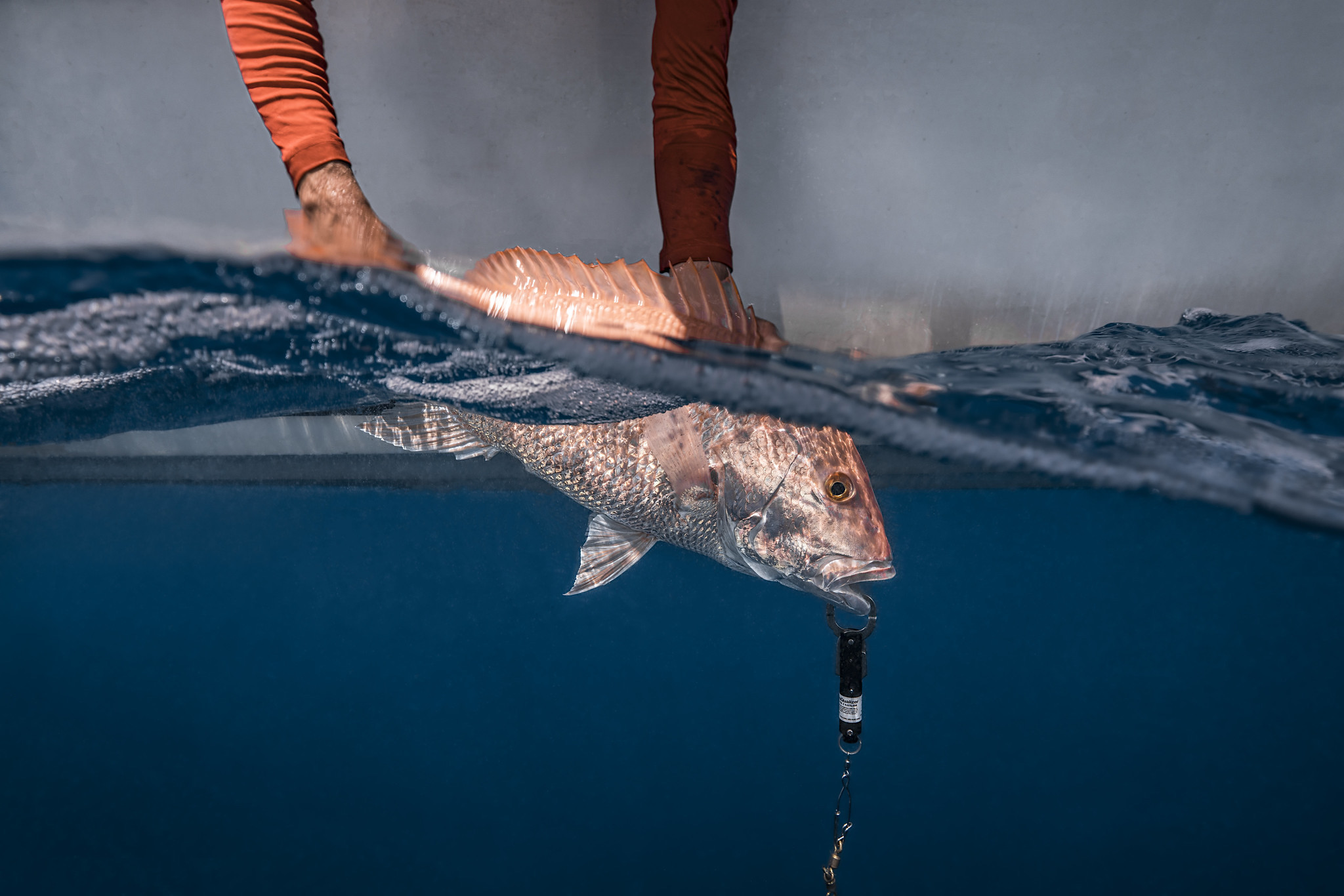
How can we rebuild the stock of South Atlantic red snapper?
A new study suggests options.
Research Need
The American red snapper (Lutjanus campechanus) is a common offshore reef fish found in the South Atlantic and Gulf of Mexico. Fishers have long coveted this species due to its aggressive nature, colorful appearance, and status as top-notch table fare. However, these days the red snapper seems to grab more attention for its controversial management.
more…
Despite continuing efforts to rebuild the South Atlantic red snapper stock, overfishing continues, leaving scientists, managers, and fishers at a crossroads. The stock’s recovery is critical not only for the health of reef ecosystems but also for the health of the fishing industry. Hence, there is a pressing need to investigate new management approaches.
A group of researchers recently created a model to compare a suite of red snapper management approaches to one another and to assess whether they would end overfishing.
What did they study?
The research team simulated 25 different management strategies, using varying combinations of measures: gear modifications, regulations that lower the mortality rate of discards (released fish), size limits, and regulatory approaches based on time and/or area closures.
The research team compared all outcomes based on how well each met four core management goals consistent with ending overfishing: decreasing dead discards, rebuilding population age structure, increasing adult spawning productivity, and increasing sustainable landings.
What did they find?
This study found that decreasing recreational fishing effort by placing limits on time and space was particularly successful in ending overfishing. Limited access to the multi-species fishery was most effective in reducing discards.
Size limits, bag limits, and similar measures were not particularly effective in reducing discards. However, the use of descender devices proved effective in lowering mortality.
The study shows that fully retaining all species in the multi-species snapper grouper fishery may also be effective. Additionally, the researchers note that simulated management strategies may be paired together to meet goals.
Anything else?
The American red snapper is one of dozens of species within the larger “snapper grouper” fishery. Many species overlap in habitat and are thus caught side-by-side, which leads to catch, release, and frequent mortality for out-of-season fish, whether it be red snapper or another species.
Reducing the amount of recreational fishing activity may reduce discard mortality and accelerate stock recovery for red snapper and potentially other snapper grouper species. The authors highlight a permitting system as one possible approach. Tools like descender devices may also be effective means of improving survivorship.
So what?
Fisheries management sometimes holds off on decisions until more information is made available, delaying the implementation of new regulations. The present study shows a promising alternative that may quickly allow for more informed decisions.
Modeling management scenarios, using a host of parameters, provides an objective approach to visualizing future successes. The widespread use of models may facilitate a wave of proactive management and ultimately help avoid overfishing altogether.
by David Hugo
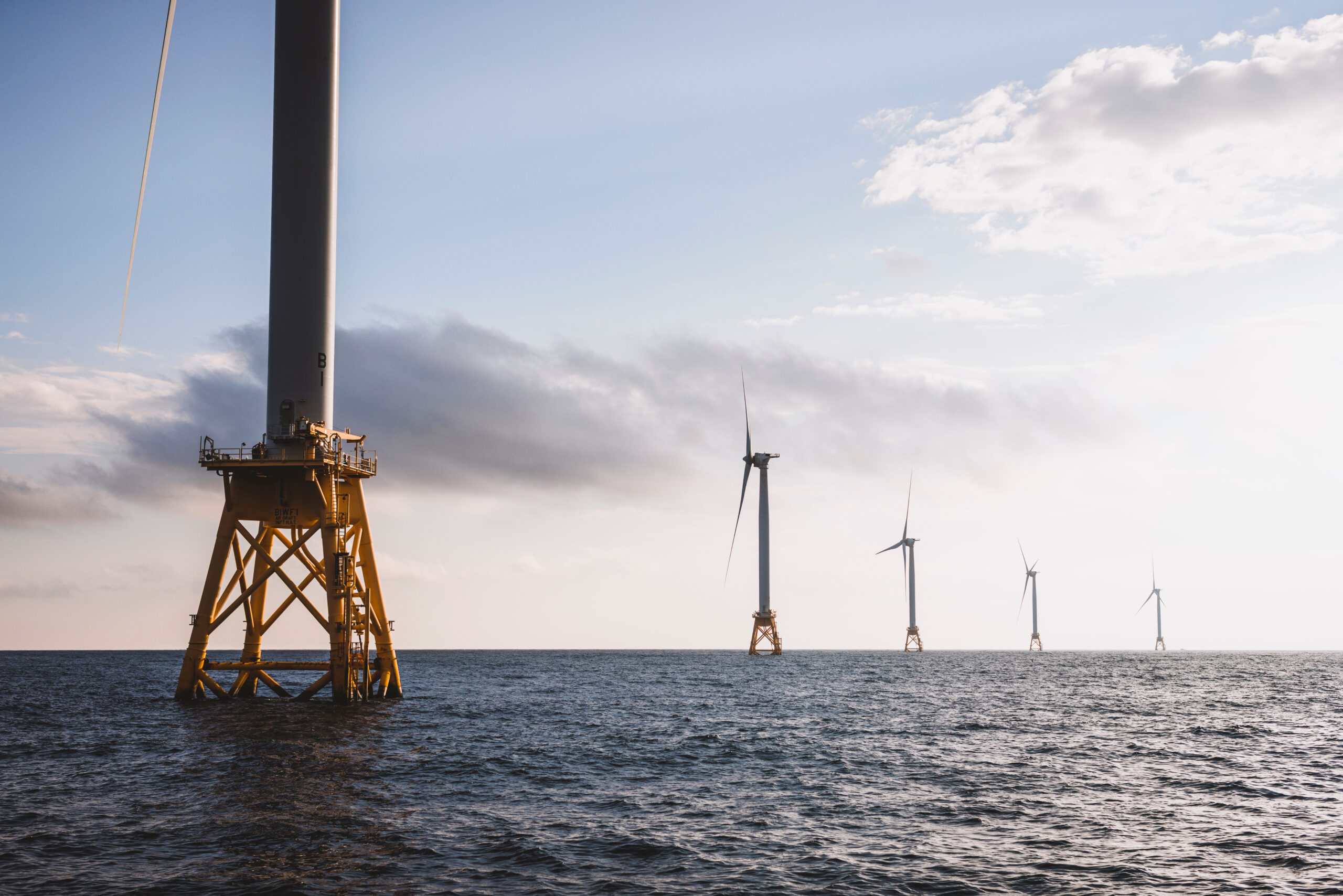
Is that windmill in your way?
Scientists use the “Fish Rules” app to figure out whether off-shore wind farms will be on sites that are important to anglers.
Research Need
Offshore wind farms are under various stages of development along the East Coast, and that has more than a few fishers anxious about the future. With most leased areas close to shore and in waters less than 200 feet deep, some fishers are concerned that the overlap of preferred fishing locations with the proposed farms is not well documented.
more…
While commercial and for-hire fisheries have existing programs to identify fishing locations, there is little to no data about anglers who fish on private boats in the ocean. And this is by no means a small sector. East Coast anglers on private or rented vessels took 14.7 million fishing trips in the Atlantic in 2023. In comparison, for-hire operations took about 824,000 trips.
Knowing that many anglers now prefer the smartphone app “Fish Rules” to access rules and regulations for specific species by GPS location, scientists thought that this data might begin to describe where and for what species offshore anglers fished. And given that fishers often use Fish Rules while fishing, there was a good chance the private angler and for-hire data would overlap.
What did they study?
NOAA scientists partnered with Fish Rules to undertake this study.
Working in the Mid-Atlantic region from North Carolina to Massachusetts, the team assembled and then compared: (1) Fish Rules data from 2020 and 2021 from private anglers, (2) for-hire electronic logbook records of catch and effort during the same time period, and (3) the geographic footprint of all current and proposed offshore wind farms.
The research team used complex models to compare target species, catch, effort, and location of private anglers with for-hire ocean operations and then considered these findings in the context of proposed and existing offshore wind leases.
What did they find?
The results suggest that locations derived from the Fish Rules smartphone application are highly likely to be representative of private recreational fishing activity.
The team looked closely at 13 popular species (striped bass, Atlantic cod, summer flounder, haddock, scup, red drum, black sea bass, tautog, bluefish, windowpane flounder, winter flounder, yellowtail flounder, and weakfish) and found all but yellowtail flounder and weakfish geographically clustered in terms of fishing activity.
The degree of overlap of off-shore windfarm lease areas varied by species. For example, four clusters of black sea bass fishing activity overlapped with 17 wind lease areas, the most overlaps for any species. But we know from a previous Hook, Line & Science story that offshore wind structures are a benefit to black sea bass.
On the other hand, the results suggest that private recreational trips for tautog, haddock, and cod are most exposed to impacts from offshore wind development.
Anything else?
The locations where fishers viewed Fish Rules regulations corresponded with locations of abnormally high rates of harvest for the species investigated. This suggests that Fish Rules data will be useful for future management discussions of private recreational fishing interests.
So What?
Here at Hook, Line and Science, we have profiled two recent research articles related to the development of offshore wind farms, including what anglers think about them and what species we can expect to catch off North Carolina.
This study is interesting for at least two reasons. First, it utilizes information from a popular app to address a longstanding data deficiency in ocean fisheries, and, second, it begins to tackle how scientists might work hand in hand with industry to collect better recreational data to improve all types of management.
For updates on all things offshore wind energy, including potential impacts to fisheries, consider subscribing to the free monthly newsletter put together by Rhode Island Sea Grant.
by Scott Baker
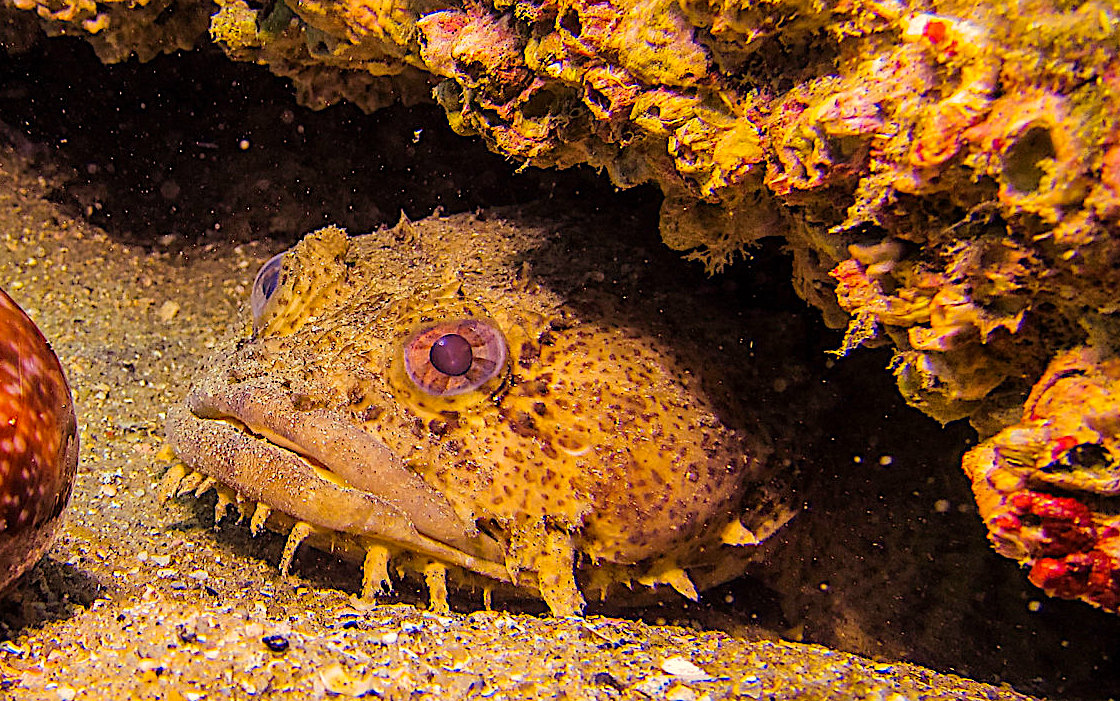
Do big city toadfish stay up later than country toadfish?
When it comes to calling for mates, night life for some toadfish doesn’t even kick off until 12 AM.
Research Need
Oyster toadfish are common along the East Coast from Maine to Florida, including North Carolina. Most anglers know these fish either by their unusual appearance and the unique vocalizations that males use to call to females. Not exactly the preferred catch of seafood consumers, the fish is bony, venomous, and difficult to fillet, yielding little meat.
But even if anglers don’t prefer oyster toadfish, scientists do like to study them.
more…
Toadfish are easy to observe and collect because they live in shallow coastal waters. They are hardy, routinely found in waters of poor quality, and can even be reared in captivity if needed. But scientists are fascinated most by studying how the male fish alter their vocalizations based on environmental conditions.
Given that the East Coast is varied and ranges from noisy seaports to harbors with little to no noise pollution, how would oyster toadfish in different environments alter their vocalizations for potential mates? Specifically, do toadfish behave differently in areas with high and low levels of noise from boat traffic?
What did they study?
The research team hypothesized that toadfish would alter their vocalizations based on local conditions. The team deployed passive monitoring systems to listen to oyster toadfish vocalize at two locations over three 24-hour periods during the summer spawning season. Pier 40 in New York City served as a site with both high boat traffic and high background noise, and Eel Pond at Woods Hole, Massachusetts, provided a water body with both low boat traffic and low background noise.
What did they find?
The results suggest that the male oyster toadfish in New York City waters have acclimated to their environment by vocalizing more frequently from around midnight to early morning, avoiding the sustained level of background noise from intense boating activity during other periods.
However, toadfish at the quieter Woods Hole site made most of their calls much earlier in the evening, from around sunset to midnight. That period is still too noisy in New York City.
From a broader perspective, the toadfish calling behavior observed at Woods Hole is similar to toadfish observations made previously at other tranquil, non-urban locations.
Anything else?
Just how busy is New York City boat traffic? Researchers identified numerous commercial and recreational boats crossing that study site, with an average of 35 boats per hour, creating an environment significantly noisier than the quieter study site at Woods Hole, which saw little activity of large vessels.
So What?
As our estuaries become more urbanized, there is a continual need to define new ways to evaluate human impacts on native species and ecosystems. This study suggests that oyster toadfish are indeed adjusting to an altered environment. More longer-term research can determine what impact these behavioral changes might have on mating, survival, and stress.
by Scott Baker
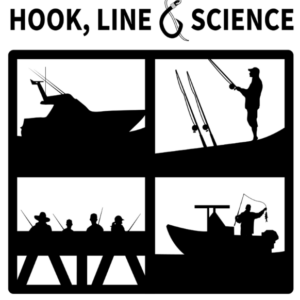
For more news and research, visit Hook, Line & Science.

